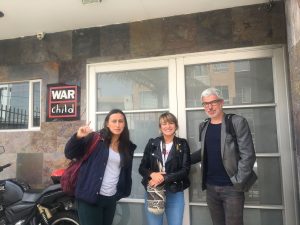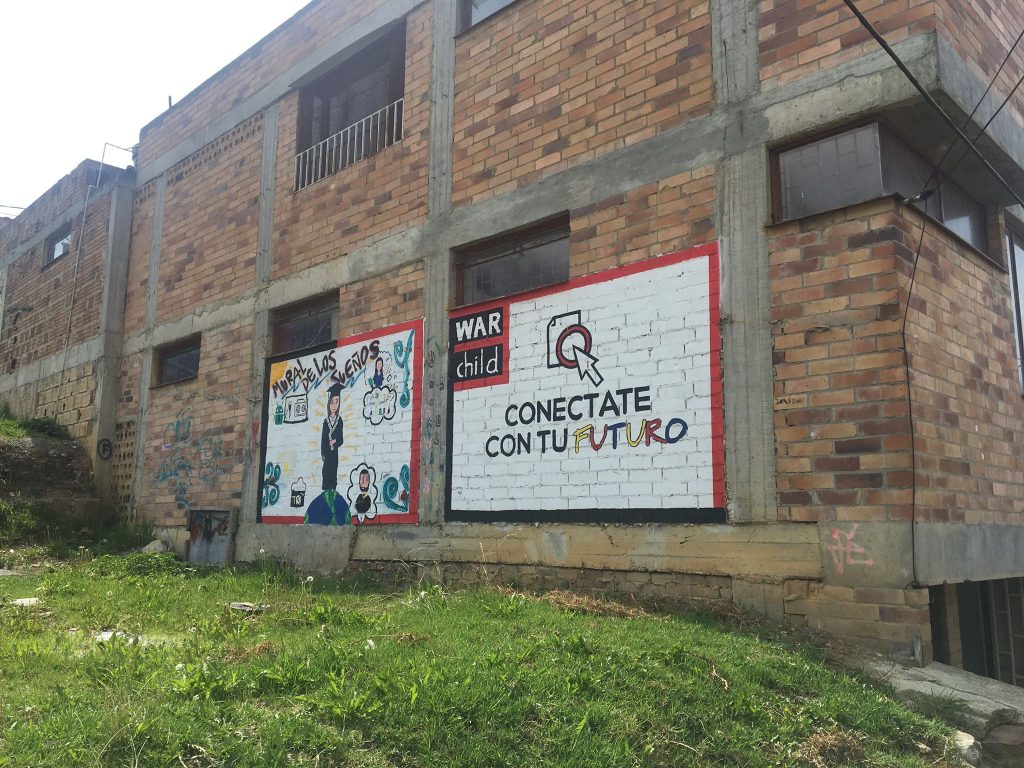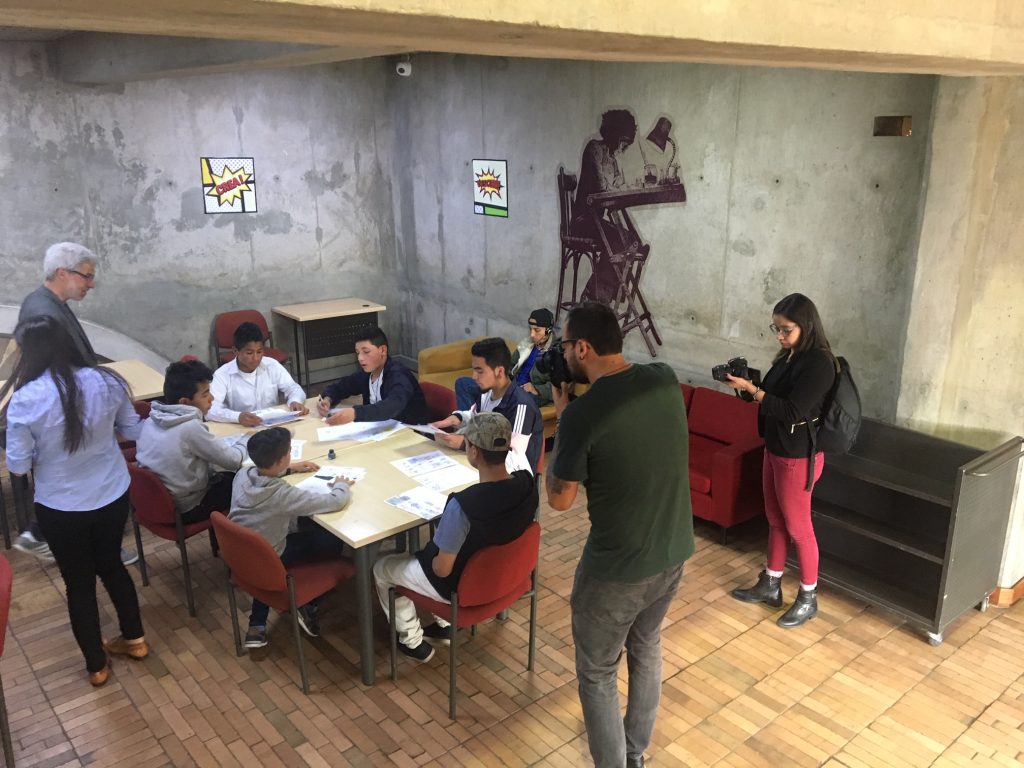News
Podcast on cross-sector innovation with ifa laboratory director Johanna Suo
What is cross-sector innovation and what are its positive impacts? In this podcast – 2hochMEHR – Innovation Denken – Johanna Suo (Kouzmine-Karavaïeff) talks about transfer of skills from art professions to other sectors and the wider economy.
Thank you Diplomatic World Institute.
The 2021 UN Year of Creative Economy
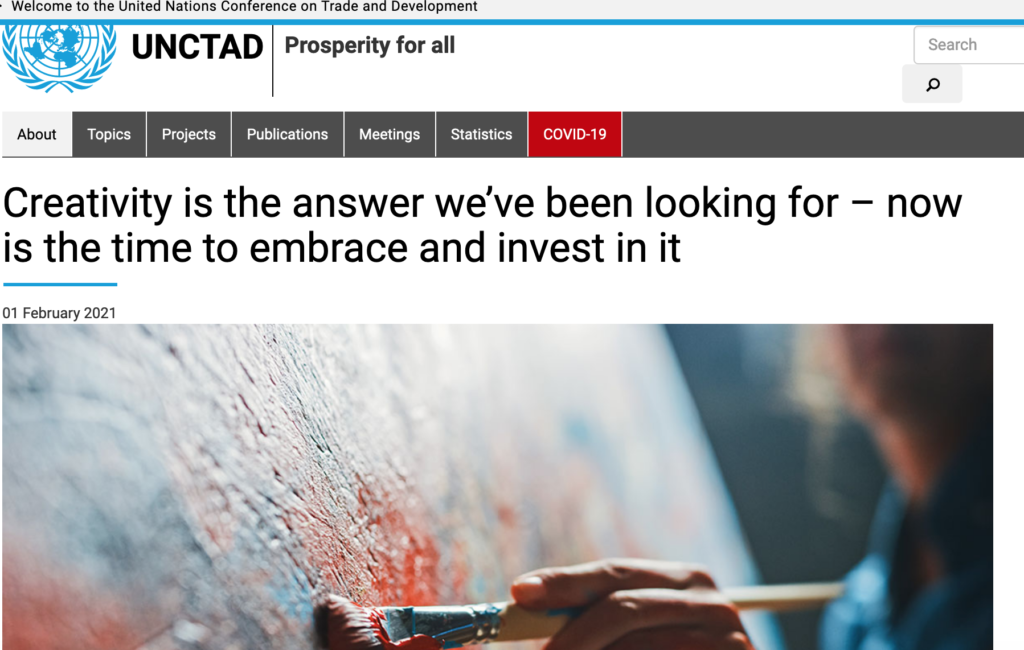
I could not agree more that creativity is an answer for us today. The statement comes, as you can see above, from the article by Marisa Henderson, Chief of the Creative Economy Programme, and Amy Shelver, Public Information Officer, UNCTAD. The 2021 UN Year of Creative Economy #CreativeEconomy2021 is a great opportunity to look at this much closer.
How is creativity actually interpreted, how is it used and in which contexts?
There is much misunderstanding around this word. Who would say that for example the artist is the expert of creativity? In a survey among visitors at European Business Summit over 95% of the persons we interviewed did not connect creativity with the arts at all.
But the thing is, the artistic professions have a high concentration of creativity. This can be leveraged for human-centric innovation and for the wider economy. This is truly about sustainable development of the creative economy; to leverage skills that the artistic professions are filled with. It can create jobs and it can create innovation.
What is problematic is that not many artists are aware of how they can benefit of their skills beyond creating their art. Education has not created enough awareness on how they could use their skills in a different, additional context and create more revenues. And businesses, in general, seem to be in the cradle of understanding the potential collaborating with artists.
The diversity of thought, and the exchange of different ways of seeing and doing is not enough encouraged from start. Who could think that awareness of that sort can possibly be crucial for the whole operational system of a workforce across sectors.
Creativity has innovation potential and creativity in artistic professions comes down to the creative process and the fundamental culture of these sectors that enables innovation – often very different to business sectors.
So we need to raise awareness about this, and we need to put into place an eco-system, reaching other sectors and the wider economy, both on a micro and macro level for the skill transfer.
Together with my colleague Khawar Hameed from Artisans of Innovation and with Zeldah Schrama we are currently writing an article on understanding cross-sector collaboration and what impact creative cultural intelligence have in specific contexts.
Contact me on johanna@ifa-laboratory.com if you would be interested, either in contributing, or if you would like to see the end result.
Creating a culture for innovation through skill and perspective exchange
In January 2021 we ran a workshop at the innovation & employability week at Staffordshire University in the UK.
Students came from different fields of study and the overall aim with was to explore human centric innovation approaches and art related processes in contemporary professional practice. In doing so, exploring:
· Why is innovation important and why is it important from an employability perspective?
· What is important for innovation?
· How do you put together a dream team for innovation?
· How to use one’s skills in different contexts?
· How can culture and creative sector related skills be valuable for wider innovation?
It is of key importance to make the so talked about knowledge economy skills and 4th industrial revolution skills experienced and felt so one truly understands what we are talking about.
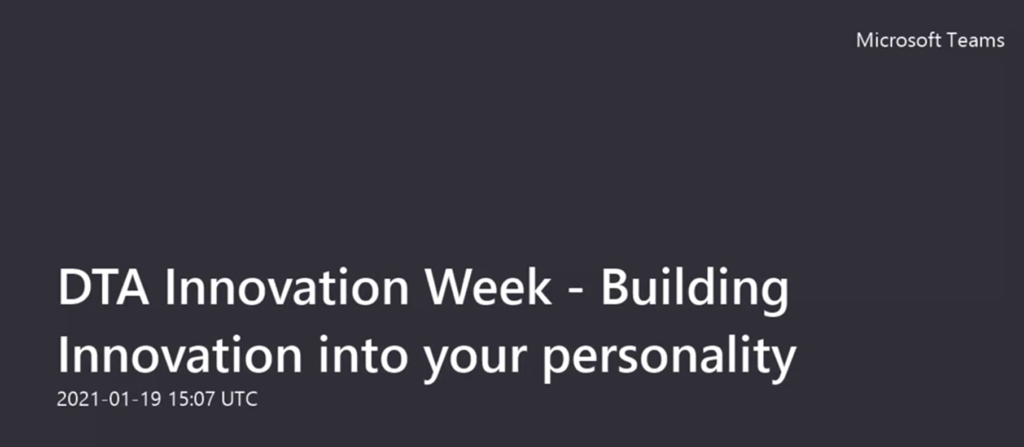
Johanna Suo appointed Ambassador for Culture and External Relations & Development
In January 2021 ifa laboratory director Johanna Suo was appointed Diplomatic World Institute Ambassador for Culture and External Relations & Development. On LinkedIn Johanna Suo said the following: “In this role I hope to further shed light on different aspects of the value of culture, its place in international relations, in innovation, cross sectoral collaboration, social impact, conflict prevention, the way it impacts us human beings, our lives and wellbeing. We are culture.”
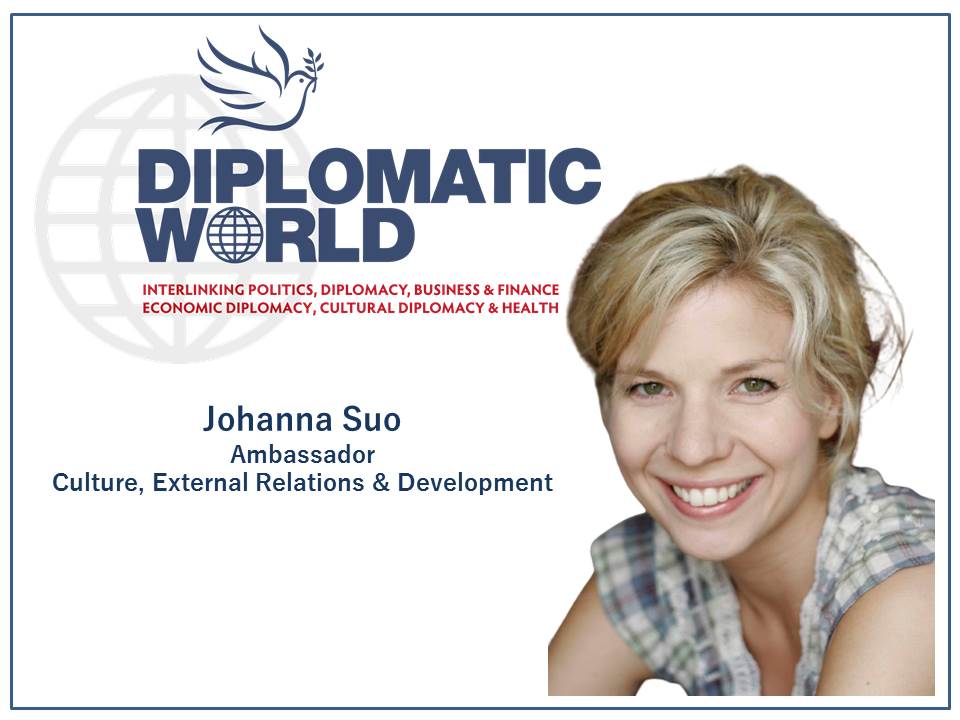
Cultural Diplomacy – an exercise for the tightrope artist?
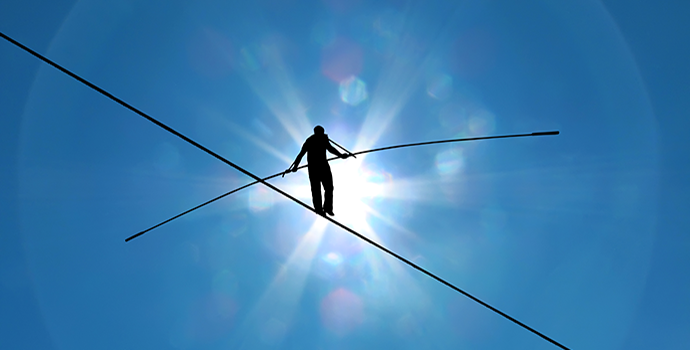
Cultural diplomacy as of politically motivated image building, cultural capacity building, or creating a better world? Is it possible to follow these three purposes at the same time?
ifa laboratory director Johanna Kouzmine-Karavaïeff Suo has recently finalised research looking at cultural diplomacy notably from a cultural strategist’s perspective. She has looked into challenges for foreign ministries in relation to cultural action, at examples of how culture is employed international relations or how culture is internationalised.
Governments interpret cultural diplomacy in various different ways; culture as promotion, culture as development, culture as weapon, culture to gain power, culture as strategy, culture for dialogue, culture for mutual understanding, culture for its intrinsic value, culture for capacity building.
How can a country present a dynamic context for culture, with balanced programmes in external relations?
It is probably time for a new paradigm for culture diplomacy, to embrace bigger and more generous approaches; working with jointly defined ideas, needs, disciplines and values. As culture is equal with people, how can cultural diplomacy engage with people, function as dialogue, develop communities, build collaboration, address global challenges and the needs of the cultural and creative sectors?
Culture in direct connection with global challenges
In Colombia the Ministry of Foreign Affairs Sports and Culture Diplomacy Programme has the philosophy that building on people’s capacity within the country will benefit the country also in its external relations; through the new relationships that the youth participants build and the excellence they develop through the programmes.
Cultural diplomacy should be more multilateral. Not only between nations to solve global issues, but also multilateral in the sense that it engages with different segments and sectors of the society to present results that impact the many, and not the few.
We should rethink cultural diplomacy from a social innovation perspective.
There is a lot of buzz around cultural diplomacy today, but one may ask if there really should be, if cultural diplomacy does not respond to needs of the Culture and Creative Industries or to global challenges.
The term ‘cultural diplomacy’ is broadly used and widely interpreted. The use of the term may be outdated. Culture and external action could be a more appropriate term, as it gives room for vast practice and does not instrumentalize in any way.
In the title of the thesis a link is made between cultural diplomacy and the tightrope artist. Maybe the outcome of a wrong step in cultural diplomacy practice is not dire, as in the case for the tightrope artist, after all there is no right or wrong way of engaging with culture in the context of foreign and external relations.
However the title is chosen to give cultural diplomacy the attention it requires; it is a demanding exercise to get right. Getting it right can contribute to much more than the image of a country (only some examples mentioned here), to the fulfillment and empowerment of people, dynamic culture and creative industries, relevance between domestic and global needs, and the creation of natural ambassadors among the population.
Promotion-oriented cultural diplomacy has a clear ‘return on investment’ thinking but it seems that actions in line with capacity building, social programmes and global challenges bring more return and image to an entity or country. The latter way of engaging does not have the return of investment as first objective, but it comes naturally as byproduct.
Cultural Diplomacy – an exercise for the tightrope artist? offers the following chapters:
Definitions of concepts and terms
Cultural diplomacy – definitions, objectives and approaches
Examples and ideas of culture in international relations (Geopolitics and cultural diplomacy, Culture and Cultural diplomacy addressing sustainable development goals, UNESCO, Cultural Rights. Culture is a human right, the Fribourg Declaration, American artist Jon Rubin’s bridge building practice)
Case project Colombia – Belgium, Pile ou Face/ Cara o Sello
The context of cultural diplomacy in Belgium and Colombia
The context of cultural diplomacy in Belgium (The Flemish Community, Wallonia, the French Speaking Community and Wallonia Brussels Federation, The German Speaking Community, Brussels Capital Region, Cultural diplomacy from a federal level standpoint, The position of Belgium today, Challenges and opportunities)
The context of cultural diplomacy in Colombia (Country context, Colombian cultural diplomacy in policy and practice, The position of Colombia today, Challenges and opportunities)
Positioning the project Cara o Sello/Pile ou Face in relation to Belgian and Colombian cultural diplomacy contexts
Cultural diplomacy -Conclusions and final thoughts on challenges (10 pages)
Interested in knowing more? Please send a mail to: johanna@ifa-laboratory.com
Understanding cross-sectoral collaboration
The director of ifa laboratory, Johanna Kouzmine-Karavaïeff (Suo) works since a while back on research that aims to develop an understanding of cross-sectoral collaboration. This is unique because of its approach which examines cultural & creative intelligence and what impact these have in specific contexts.
The team provides a rich mix and further adds to the uniqueness: Khawar Hameed is an expert in digital innovation & transformation and also recently completed a study on Digital Leadership; Zeldah Schrama is an expert in corporate innovation, and Johanna Kouzmine-Karavaïeff (Suo) has deep expert insights into the Culture & Creative Industries (CCIs) and the valuable set of experiences that these hold.
Insights developed will be published in an article later in 2020.
The article will:
Develop new insights into the role of CCIs in changing economies.
Demonstrate the real value & role of CCIs in cross-sector dialogue & collaboration.
Explore next generation/future skills & competencies that will support organisational and sector evolution and growth.
From a micro/business perspective, it will discuss a framework for supporting businesses to adopt creative innovation thinking and processes in an increasing competitive environment.

ifa laboratory director co-founds Artisans of Innovation
On the UN World Creativity & Innovation day ifa laboratory director Johanna Suo, together with Prof. Khawar Hameed, and Peter Rudge founded the UK based company Artisans of Innovation (AOI). AOI is an innovation consultancy specialising in human-centric innovation and cross-sector ecosystem development.
You can read Johanna Suo’s first blog contribution “The role & value of culture creative industries during the covid 19 pandemic” on the website as well as learn more about the founding trio.
You need a 360 ° view in order to innovate, that is what brought Khawar, Peter and I together. We are on the same page concerning perspectives and understanding across sectors. In some ways humans have never been so connected as now, but what still persists is that sectors are still working in isolation. We all need each other in order to find new solutions, and to innovate.
AOI recently led the Webinar ‘How the Creative, Cultural & Digital Industries Can Lead the New Post-COVID Innovation Economy’ for EURADA – European Association of Development Agencies. On this page you will also find a 12 page summary as well as the recording.
Instagram live interview with Joakim Eneroth – an artist in innovation
During the Covid 19 confinement ifa laboratory co-hosted with ifa gallery an online Instagram talk with artist Joakim Eneroth. The artist currently exhibits his brand new work Consumed Notions in Brussels.
Beyond Joakim’s talent as artist, his work exploring the origins of creativity is of central interest to ifa laboratory. Johanna Suo (J.S), director ifa laboratory asks some questions to Joakim Eneroth (J.E):

Blog for Cultural Solutions from Siena Cultural Relations Forum 2019
Our director Johanna Suo wrote a blog for Cultural Solutions when attending the Siena Cultural Relations Forum 2019. Please find the online blog article here.
Article from Colombian El Espectador about comic strips and anti stigmatisation.
We were recently in Colombia in order to follow process on the comic strip project we initiated with the Embassy of Colombia in Belgium. It was a very rich, important and rewarding experience; we followed workshops and we met with current partners and potential new partners. Click here to read an article in Spanish the newspaper El Espectador wrote about the project. The page of the project you can find clicking here.

